Amethyst deceiver – identification, edibility, distribution
Laccaria Amethystina
- Edibility 3/5 – tasty with a deep woodsy mushroom flavour, though a little flimsy and the stipes are generally too tough. Deceivers are known to bio-accumulate arsenic where it is present, but this shouldn’t be a worry provided you aren’t picking it on industrial locations, or eating it in industrial quantities!
- Identification 4/5 – Cap 1-4cm, amethyst purple when damp, drying to greyish or even pale hues, at which point the amethyst colour becomes hard to see; gills broadly spaced, often partial (ie. not the full radius from cap edge to stipe); stipe concolorous with cap and gills, narrow, hollow. Pulled from the ground, they usually come with some cottony looking fibres attached to the stipe base.
- Do Not Confuse With: Lilac Bonnet (not edible as it contains small quantities of muscarine) is much paler (pink, not amethyst) ; Lilac fibrecap (poisonous) is also much paler (though remember, amethyst deceivers can look paler in dry weather!)and has snuff brown spores. Lilac bonnet is easily distinguished because it has white gills that become walnut brown as it spores mature.
- Less Troublesome Lookalikes: Near relations are the deceiver (laccaria lacata) – a tan brown capped version of the amethyst deceiver, with pale gills beneath (also edible, though being small, brown and variable in its appearance, is generally harder to confidently identify). The twisted deceiver (one of my favourite mushroom names!) and bicolour deceiver are equally edible near relations, that do just what their names suggest!
- Distribution 5/5 – Very common, often in huge numbers
- Season: July-November
- Habitat: Any woodland especially deciduous, most commonly beech
- Ecology: The huge constellations of these that appear in leaf litter suggest that they might be saprotrophic (rotting) fungi, but in fact they are mycorrhizal, forming complex symbiosis with their partner trees, though not especially fussy about who they trade with!
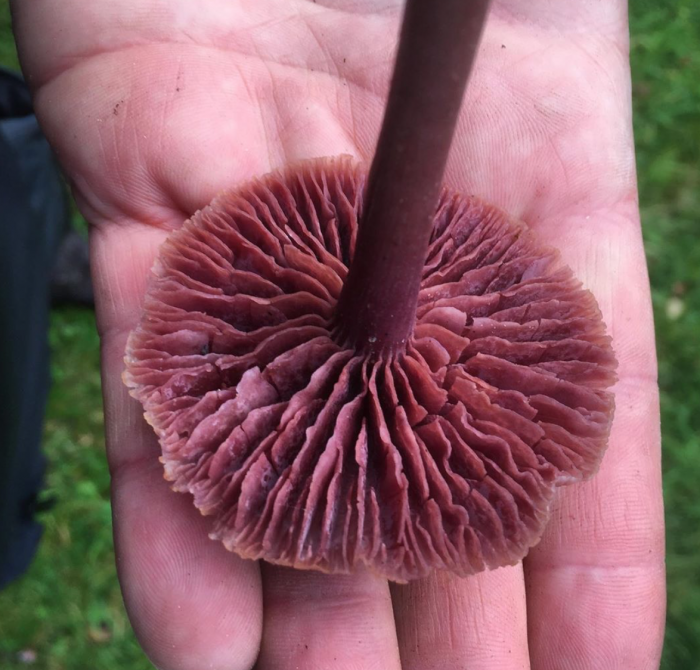
An unusually large amethyst deceiver, showing the broad gill spacing, and partial gills, that only go part way to the stipe. These are two of the most consistent and recognisable features of all the laccaria species.
Though a little flimsy of texture, these mushrooms are well worth picking for their beautiful colour, which is even more striking in a basket next to chanterelles – which they can often be found growing alongside. Sadly the colour fades on cooking.
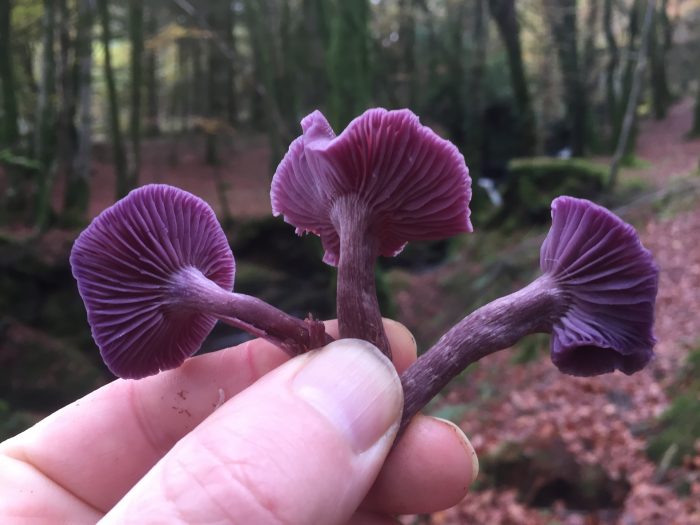
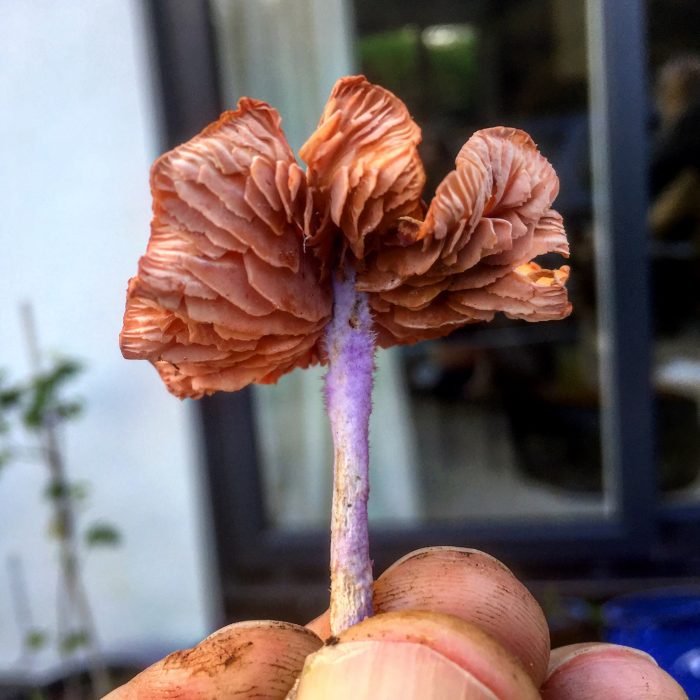
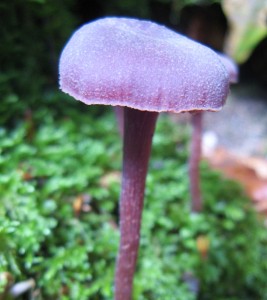

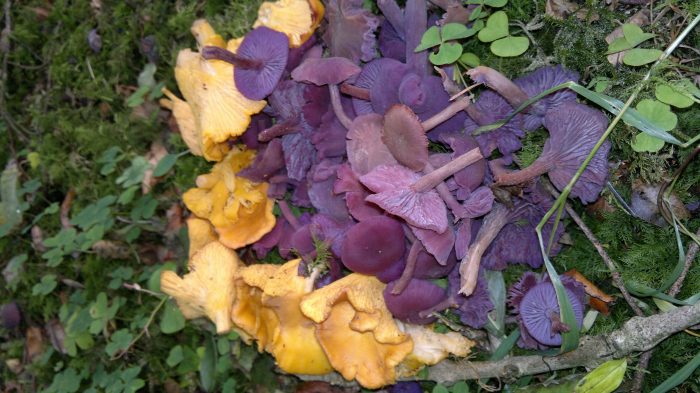
4 Comments
Hi,
Could you please tell me how is best to correctly discern the mushroom from the lilac bonnet?
Thanks,
Cam.
Hi Cam,
I’ve added more info above. Hope it helps. Probably best to check in a good fungi guidebook if you still aren’t sure.
Cheers,
Mark.
Hello Mark,
We are newcomers to the area. Bought an old estate near Threave, Lots of woodland and amazing mashrooms all around. I would be interserted getting in touch with knowladgeble people like yourself.
Regards
Dilek
Hi Dilek – I have emailed you directly. 🙂
Mark